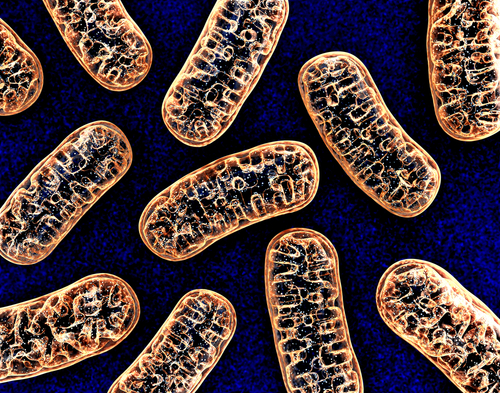Study Shows How DNA Mutations in Healthy Mothers May Lead to Severe Mitochondrial Disease in Children

A new U.K. study shows why mitochondrial disease can occur in previously healthy families.
The research, “Segregation of mitochondrial DNA heteroplasmy through a developmental genetic bottleneck in human embryos,” appeared in the journal Nature Cell Biology.
Mutations in the DNA of mitochondria (the cellular power plants) affect only one in 10,000 births, but may lead to severe mitochondrial disease. Unlike nuclear DNA, mitochondrial DNA passes exclusively from mother to child.
The research team at MRC Mitochondrial Biology Unit at the University of Cambridge collected embryonic germ cells (which originate egg cells) from mice and healthy women to test their mitochondrial DNA.
The analysis showed several mitochondrial DNA mutations in the developing egg cells of all 12 human embryos analyzed. This indicated that healthy humans carry low levels of these mutations.
“We know that these devastating mitochondrial mutations can pop up in families without any previous history, but previously we didn’t know how that happened. We were surprised to find that egg cells in healthy females all carry a few defects in their mitochondrial DNA,” Patrick Chinnery, MD, PhD, said in a press release.
Sexual reproduction prevents inheritance of most mutations through the combination of egg and sperm. However, the asexual replication of mitochondria causes its mutations to be passed down unchanged from the mother. Mitochondrial DNA mutations, therefore, may accumulate over generations, which ultimately could result in disease.
Aiming to explain how mitochondria remain healthy over time, the scientists predicted a “bottleneck,” where only healthy mitochondria survive.
The results showed that, in contrast to the 100,000 mitochondria in mature human egg cells, developing cells have only about 100 mitochondria per cell. Although its mechanisms remain to be elucidated, this drastic reduction means that the few mitochondria with altered DNA are no longer “silenced” by the much larger number of healthy mitochondria.
Furthermore, the “bottleneck” also may mean that developing egg cells with faulty mitochondria do not produce enough energy to mature and die.
Mitochondria ultimately increase in number over cell development. If cellular quality control mechanisms fail, the few mutated mitochondria after the “bottleneck” could be the ones repopulating the mature cell, and potentially causing mitochondrial disease.
“Unfortunately, the purification process is not perfect, and occasionally defective mitochondria leak through. This can cause a severe disease in a child, despite no one else in the family having been affected,” Chinnery said.
Mitochondrial diseases remain incurable. However, mitochondrial transfer through in vitro fertilization (IVF), which enables replacement of altered mitochondria with healthy ones from a donor, offers families affected by mitochondrial disease the possibility of having healthy children.
Overall, “harnessing the underlying cell biology could help prevent human [mitochondrial DNA] disease,” the study authors wrote. “Moreover, given the potential role of [mitochondrial DNA] mutations in common age-related disorders, preventing their transmission may have a wider impact by promoting healthy aging in future generations.”






